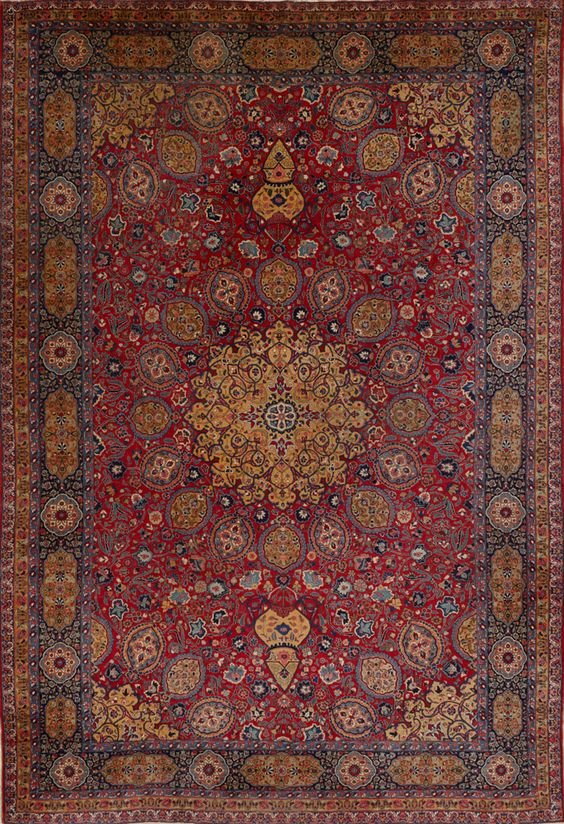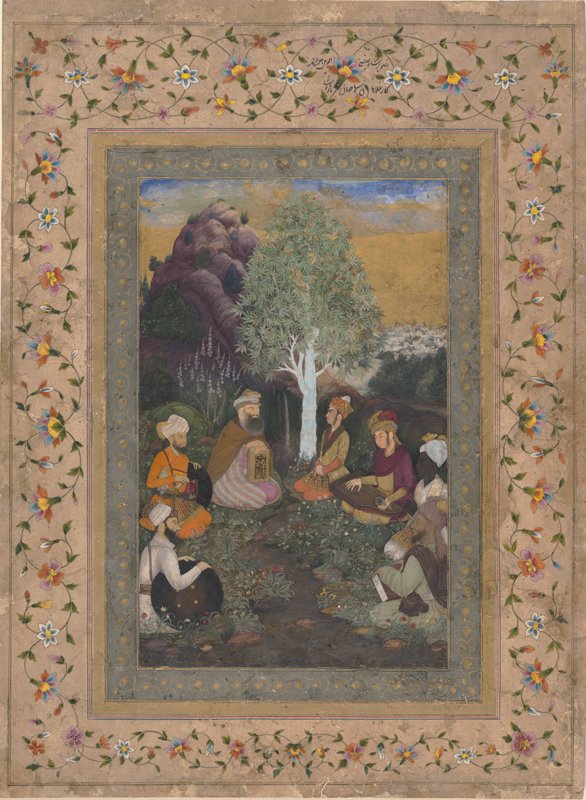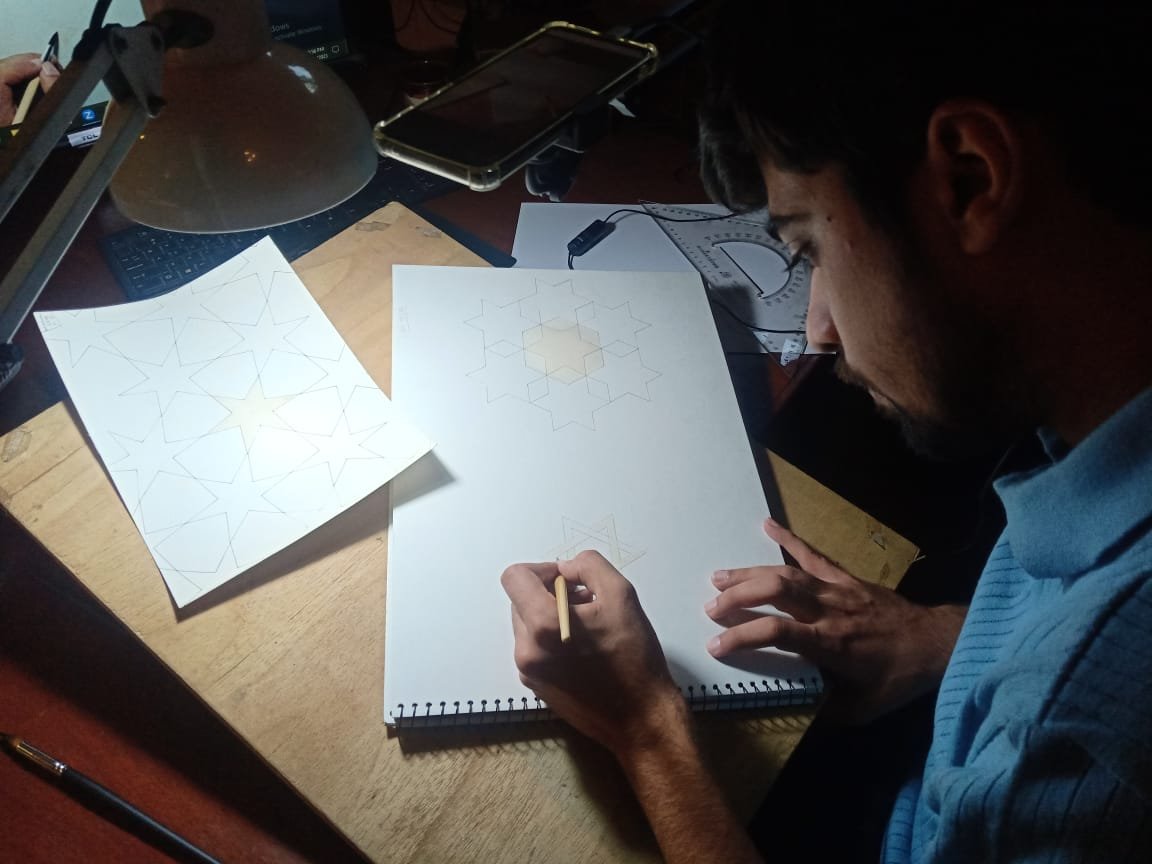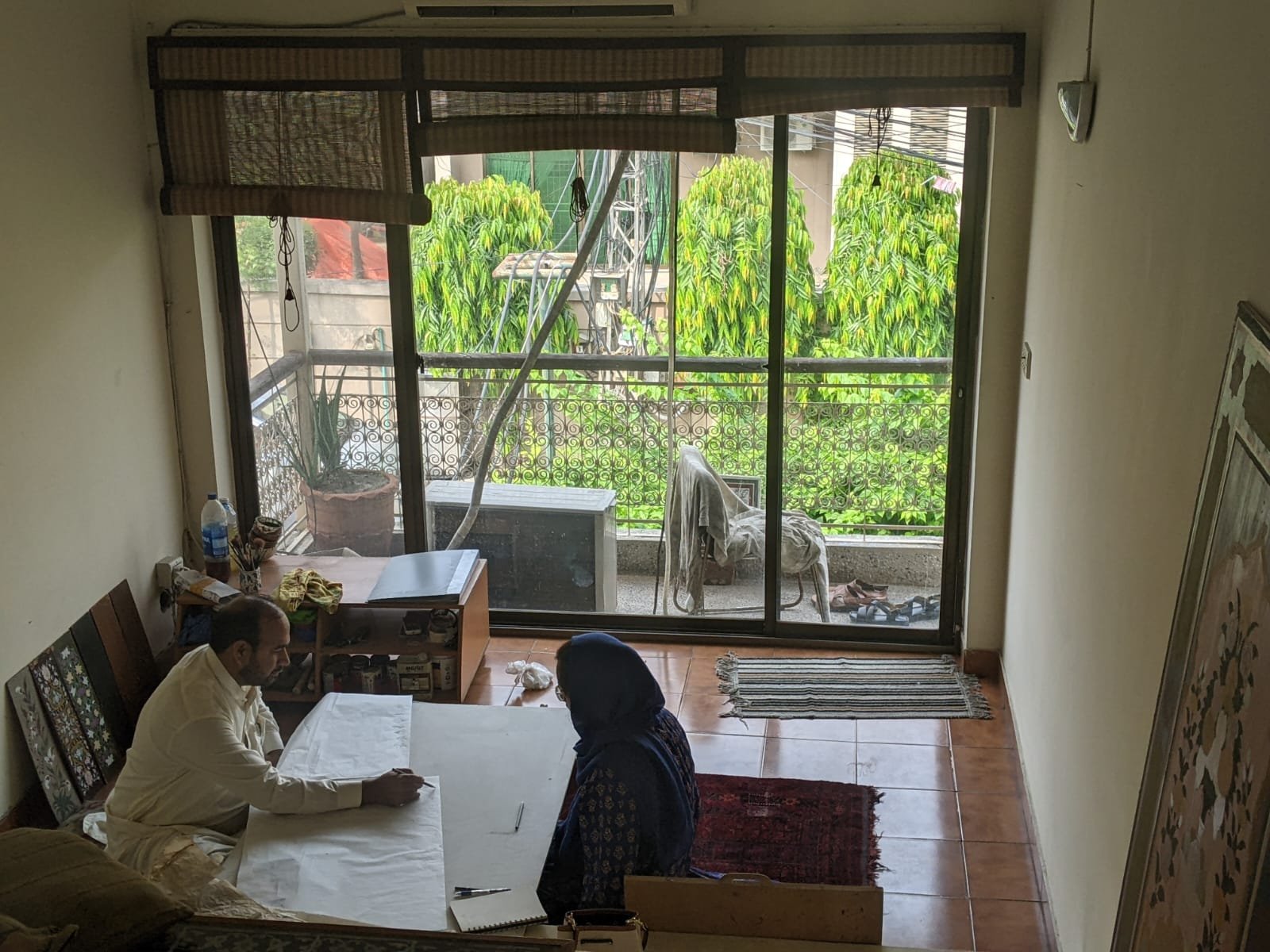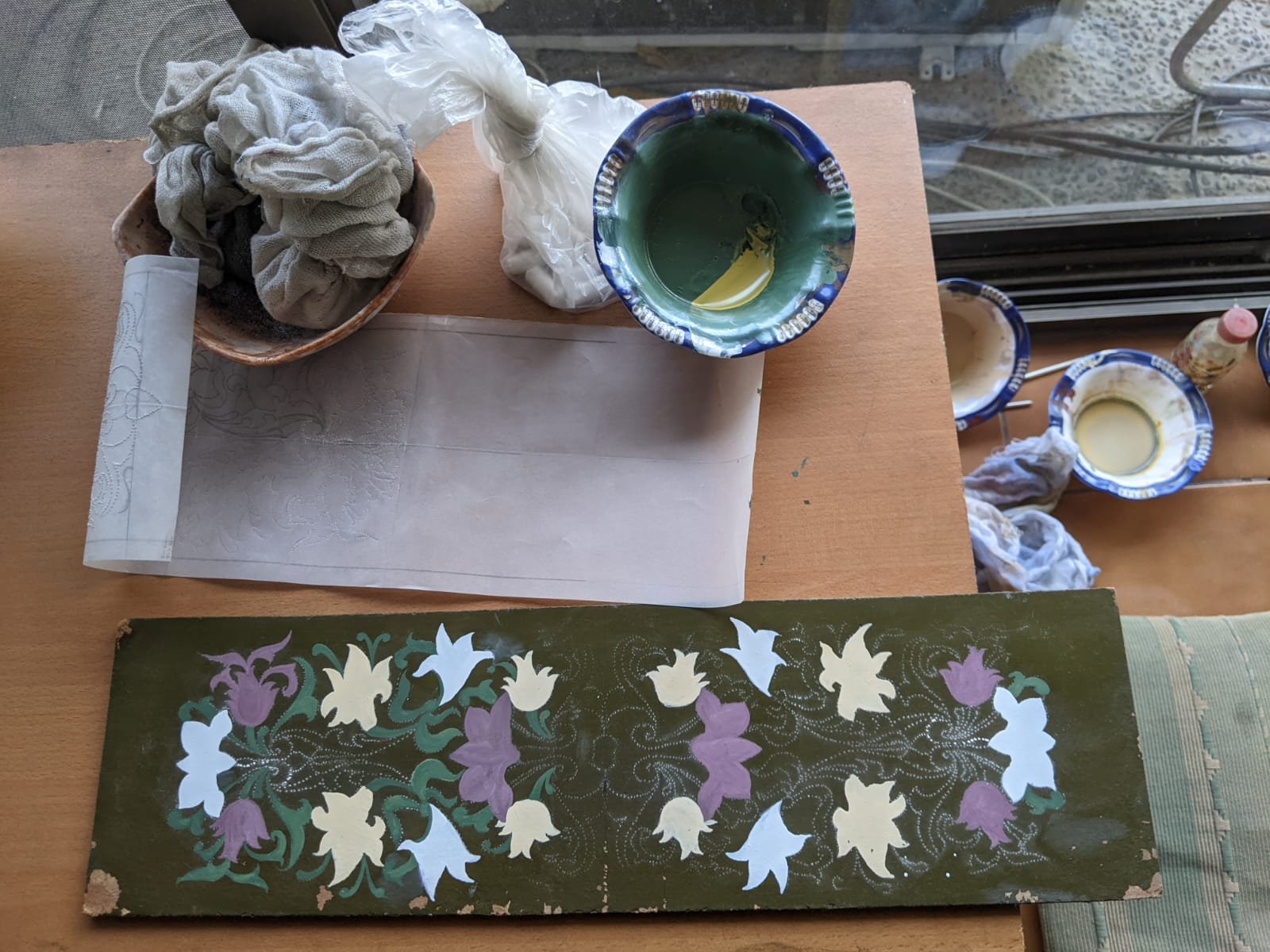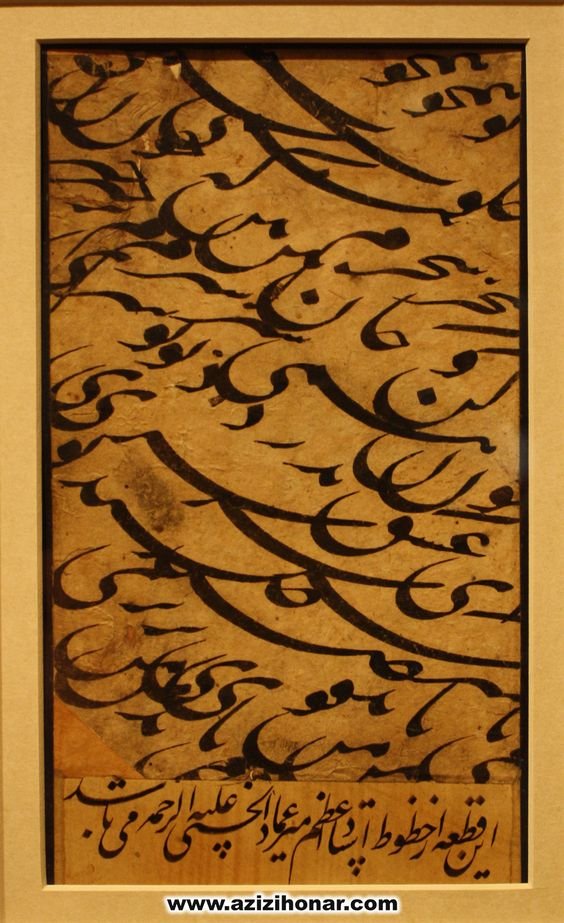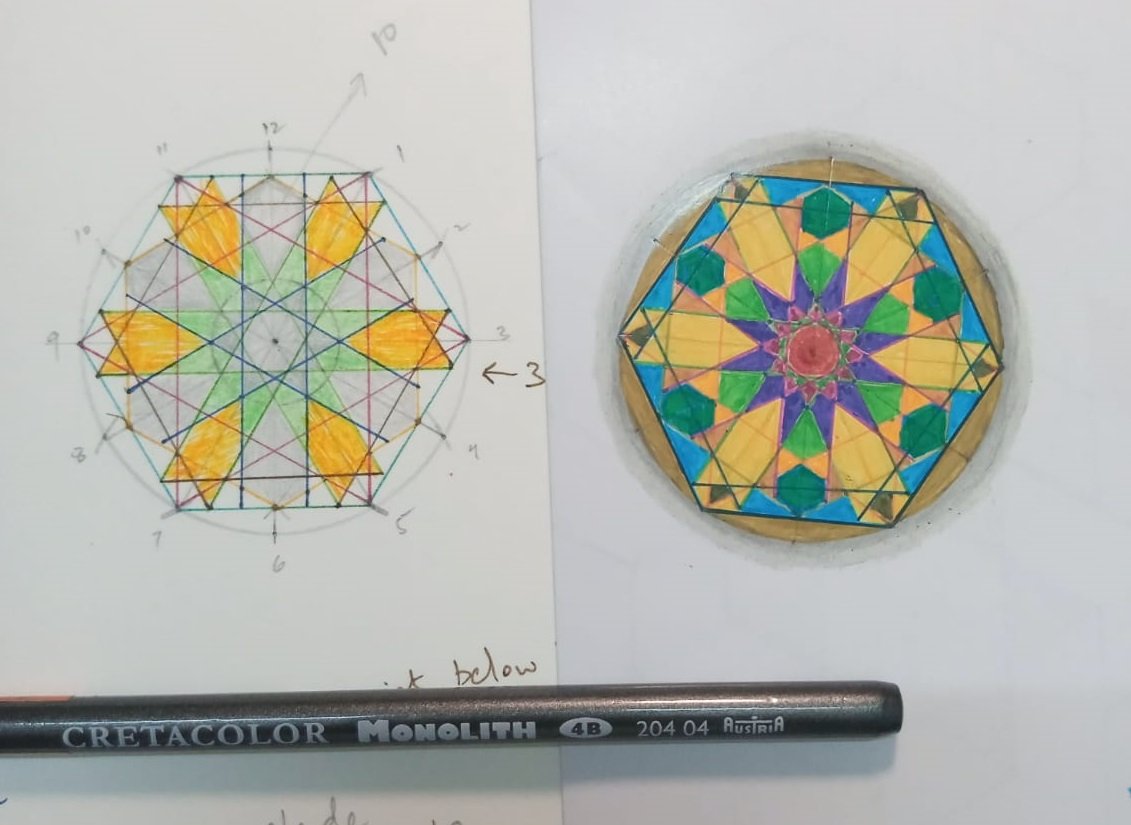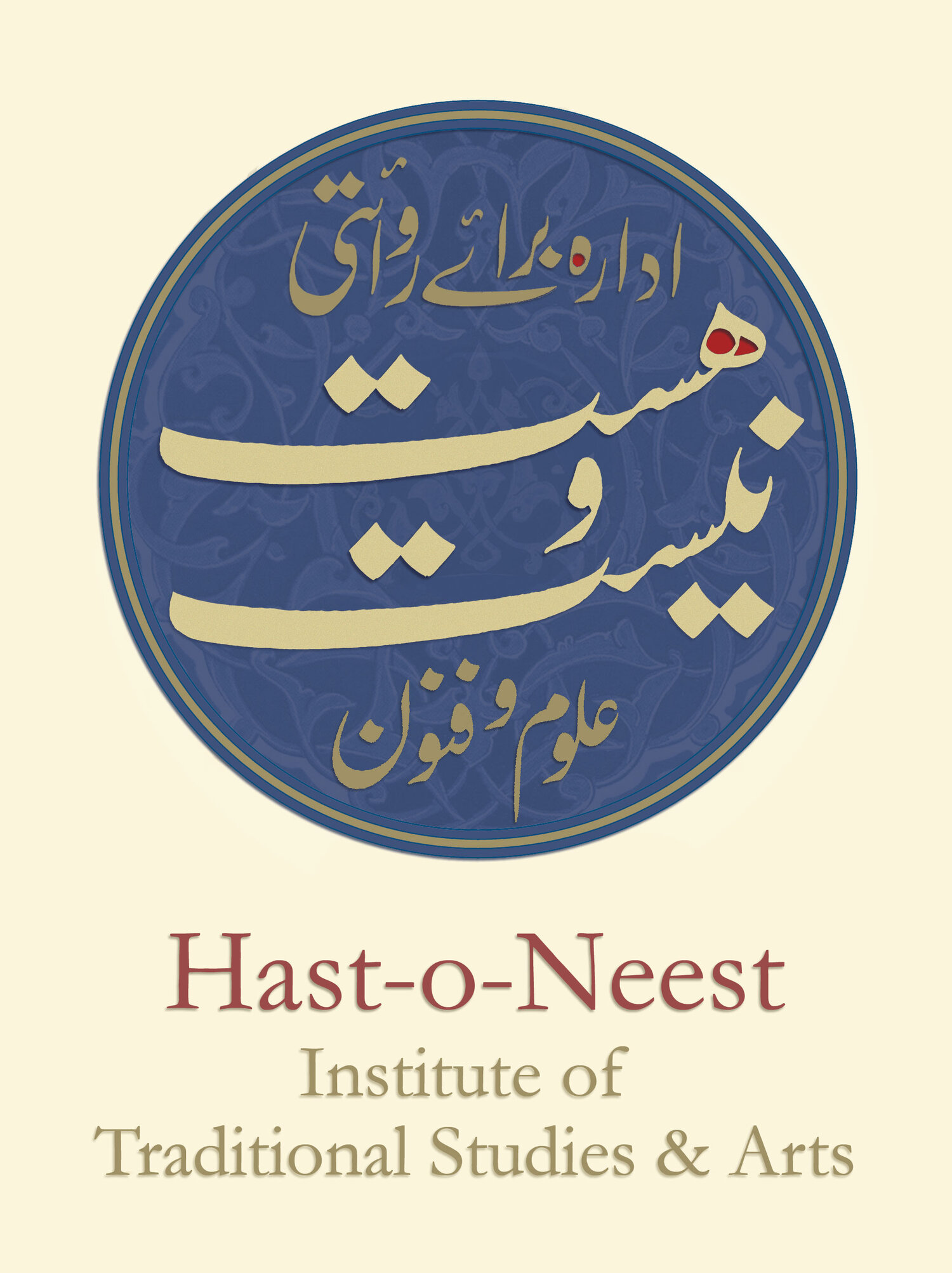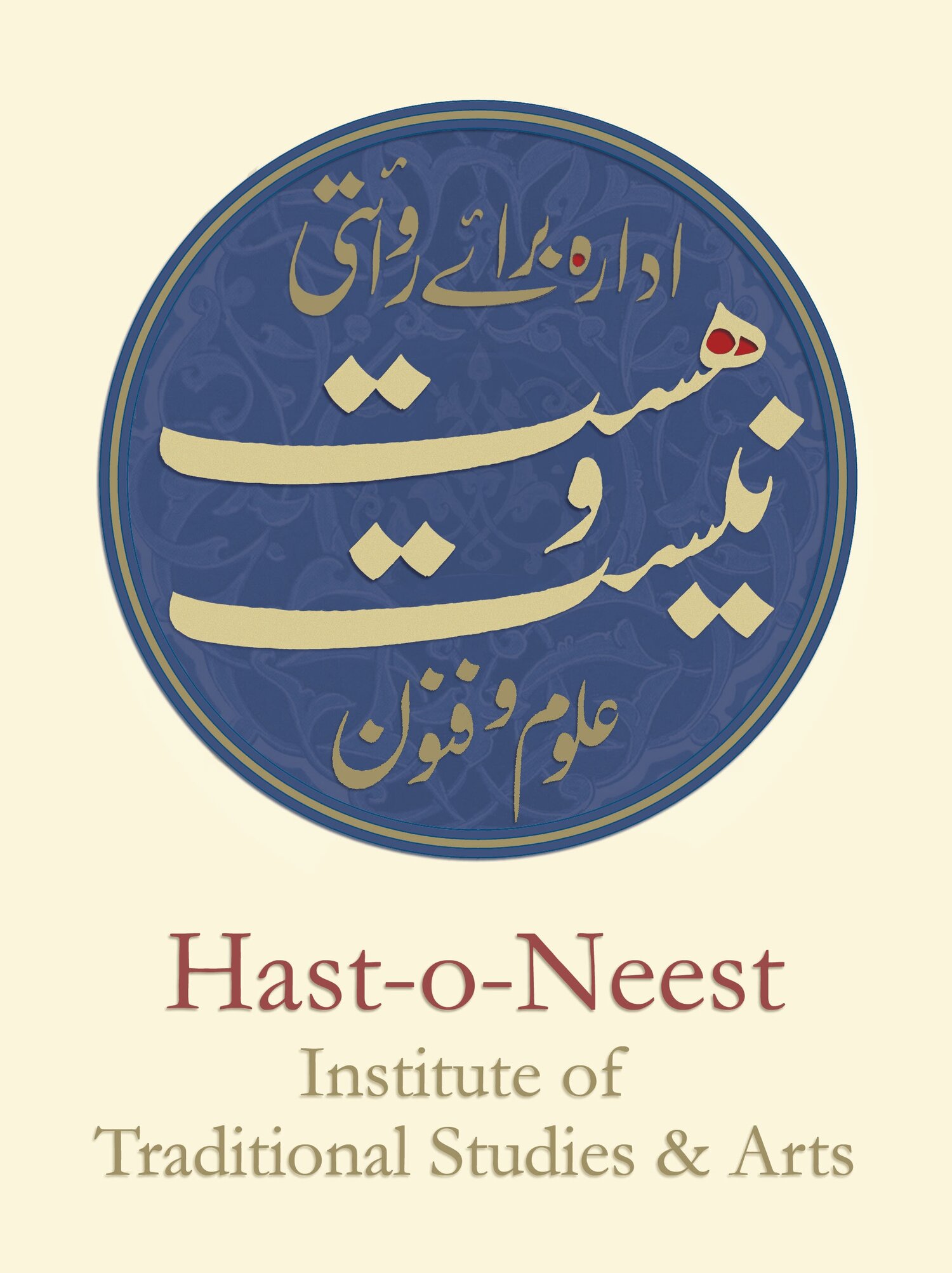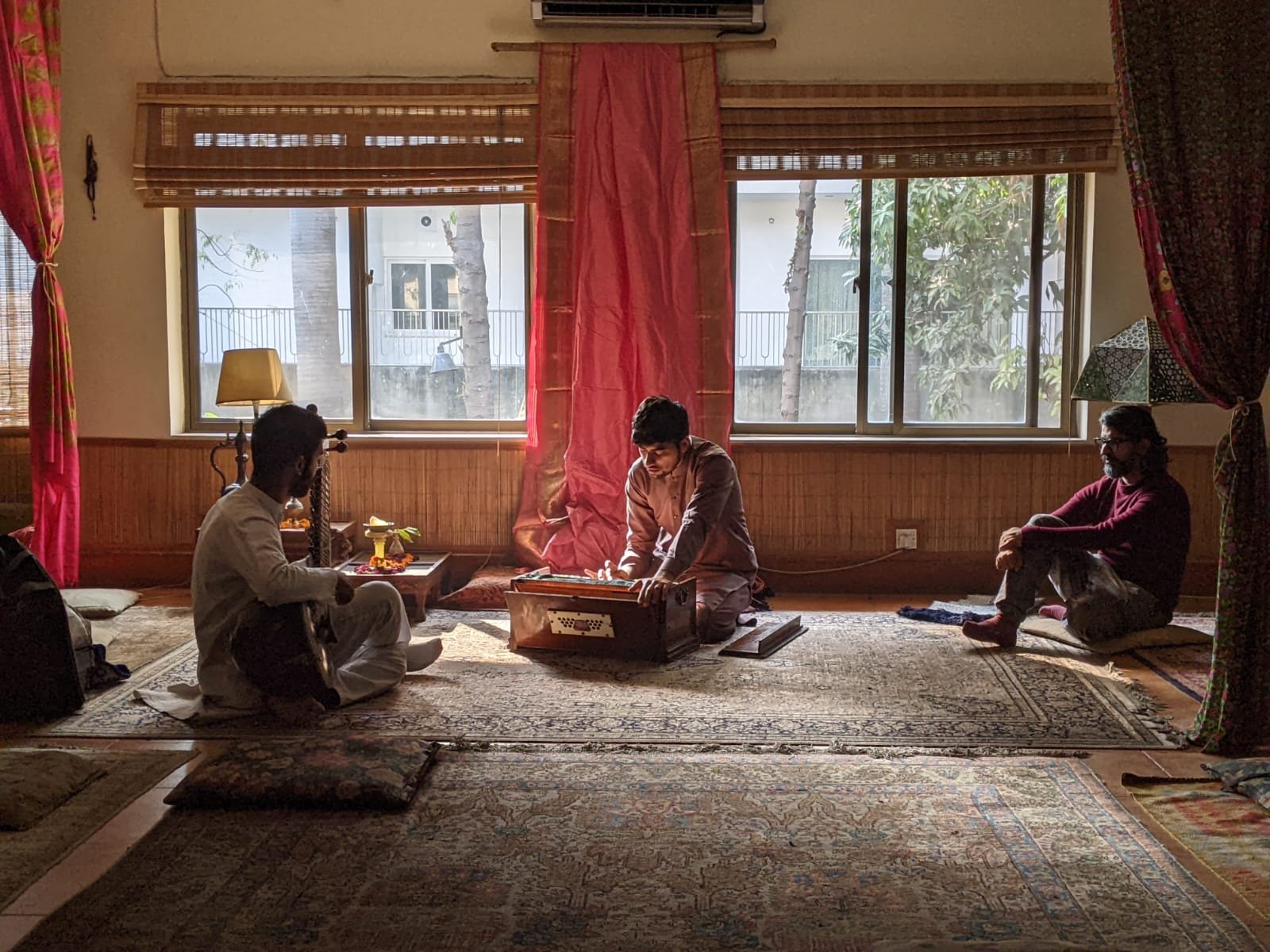
Abu Ali Muhammad ibn Ali ibn Muqla (c. 885 – 940, Baghdad)
The foundation of Islamic calligraphy was laid down by the creative genius of three great calligraphers from Baghdad; Ibn Muqla (886–940) the Wazir of the Abbasid court, Ibn al-Bawwab, and Yakut al-Musta’simi of Amasya (d. 1298).
The Arabic saying, طهارة الكتابة هي نقاء الروح or ‘Purity of Writing is Purity of the Soul’ vividly describes the Master Calligrapher. It is believed that only a person of spiritual devotion and clear thought can achieve the skill required for this supreme art.
Ibn Muqla established the principles of calligraphy. To this day, Islamic calligraphers use his theory of proportion based on three sets of measurements: the dot, alif, and circle. He is considered the originator of "proportioned script" -al-khatt al-mansub - perfected by the 11th-century Persian calligrapher Ibn al-Bawwab.
IBN MUQLA CENTRE OF THE ARTS ابن مقلہ مرکز برائے فنون
Programs
-
‘Islamic art is … the earthly crystallization of the spirit of the Islamic revelation, as well as a reflection of the heavenly realities on earth, a reflection with the help of which the Muslim makes his journey through the terrestrial environment and beyond to the Divine Presence Itself, to the Reality which is the Origin and End of this art.’ Seyyed Hossein Nasr, Foreword, Art of Islam - Language & Meaning by Titus Burckhardt
‘…for the art of Islam expresses what its name indicates, and it does so without ambiguity. Granted that its modes of expression vary according to the ethnic surroundings and the passing of the centuries—though more upon the former than the latter—they are nearly always satisfying, as much from the aesthetic point of view as from that of their spiritual aim: they involve no disharmony, and the same cannot be asserted of all domains of Islamic culture.’
‘… the most outward manifestation of a religion or civilization like Islam—and art is by definition an exteriorization—should reflect in its own fashion what is most inward in that civilization. The substance of art is beauty; and this, in Islamic terms, is a divine quality and as such has a double aspect: in the world, it is appearance; it is the garb which, as it were, clothes beautiful beings and beautiful things; in God, however, or in itself, it is pure inward beatitude; it is the divine quality which, among all the divine qualities manifested in the world, most directly recalls pure Being.’ Titus Burckhardt, Preface, Art of Islam - Language & Meaning
Read | Art of Islam LINK
-
Tradition of Discipline & Practice مَشق- ریاضت
The journey of the classical arts requires a discipline of practice. In other words, learning, growing, excelling in an art by engaging the Ustad; by making riyazat/mashq a ‘constant behaviour’!
Reading on the art, listening, observing & keeping company of the Master are journey essentials.
-
Hast o Neest Arts Diploma
‘God is Beautiful and He loves Beauty’ – Hadith
Classical Islamic Art - like the whole of traditional society of which it was a part - aimed at integrating all aspects of the human being – physical, intellectual, moral & spiritual – with a view to integrating the whole of life into as close a harmony as possible with its ever present Divine Source.
The Diploma is based on the above basic philosophy underlying Islamic Civilization, articulated and practiced to our day by practitioners of the traditional arts of Islam.
The Diploma is awarded to participants who complete the required number of theoretical and practical courses as specified in the list given below. The duration in which the course requirements are completed can vary from one to three years.
The Arts include Arts of the Book, Classical Music Heritage, Quranic Recitation, and Architecture.
The 5 Requirements of Art Practice, Theory & Language are as follows:
1 | Art Practice
One ‘Primary’ Course (All Levels) to be completed from the list of courses offered in Ibn Muqla Centre of the Arts*, or the Ahmed Mimar Centre of Architecture.
One ‘Secondary’ Course (Level-I) to be completed from the list of courses offered in Ibn Muqla Centre of the Arts* or the Ahmed Mimar Centre of Architecture.
*Note : Geometric Design cannot be chosen as ‘Primary’ or ‘Secondary’ course as it is a compulsory requirement.
** Any ‘Special Arts’ short courses offered from time to time by Ibn Muqla Centre of the Arts would not count towards the Diploma.
(Course selection examples: Sitar as ‘Primary’ & Tazhib-Illumination as ‘Secondary’; or Quranic Recitation as ‘Primary’ & Miniature as ‘Secondary’; or Islamic Architecture as ‘Primary’ & Calligraphy as ‘Secondary’ & so on.)
Online/Remote & In-Person: Most art programs are also offered online, however there are exceptions (Classical Music Heritage programs, for example) which are mentioned in the respective Centre’s pages.
2 | Art Practice ‘Compulsory Courses’:
‘Geometry in Design’ - Levels 01 & 02 - (modules from the regular ‘Introduction to Islamic Architecture’ Course at Ibn Muqla Centre of the Arts).
3 | Theory
The following three modules from the ‘In Search of Wisdom in the Modern Age’ Program are compulsory - ( Ibn Arabi Centre of Philosophy & Metaphysics)
Modernity (An Overview of the History, Principles and Development of the Modern Age)
Islamic Worldview (Metaphysics, Cosmology, Epistemology, Ethics & Politics)
Traditional View of Art (Philosophy of Art, Art & Spirituality, Contemporary Debates – Art & Craft)
4 | Language
Select one classical language: Farsi or Arabic Fusha (Regular Course - Level 01) as outlined in the Panini Centre of Languages
5 | Final Project & Viva
Completion of a piece or pieces of work showcasing the candidates chosen ‘Primary’ and ‘Secondary’ arts; preferably in relation to a classical text (Farsi/Fusha)
Application Process :
The application can be forwarded whenever the interested applicant is ready to start their traditional art journey.
Interested applicants should:
(1) Send full name, academic background details, email address & whatsapp number with a paragraph stating the reason(s) for applying on hast.o.neest@gmail.com or on 03008493170.
(2) Select the arts (Primary & Secondary) that they intend to practice for the Diploma.
(3) Select the language (Farsi or Arabic Fusha)
Applicant Criteria: An art background is not necessary for application. Anyone interested can apply. There is no age limitation.
Candidates should be comfortable with Urdu and English.
Starting Date & Session Timings/Duration: As the Award is dependent upon completion of all requirements, there is no particular ‘starting date’ of the program. However the starting date, timings, duration, contributing fee structure of each select requirement is as mentioned in the respective Centre pages.
-
The Arts Program has three main sections:
Arts of the Book
Classical Music
Quranic Recitation
Each program is carried out under the guidance of an Ustad; and the programs are designed for complete beginners that can continue to advanced programs.
Unless mentioned, the programs are based in Lahore, Pakistan. Most of the programs can be learnt online/remotely.
-
The Art of the Book Program covers afternoon sessions - online &/or in-person - of the following art disciplines:
1. Calligraphy 2. Persian-Mughal Miniature 3. Mughal Fresco 4. Persian Tazhib 5. Islamic Geometric Design 6. 2D Drawing/Illustration
-
The Special Program covers afternoon sessions - online & in-person - of the following:
7. Ebru Turkish 8. Natural Pigment Making 9. Secco Painting 10. Paper Making
-
The classical music program is carried out under the guidance of Ustads for complete beginners who can continue to advanced levels.
Application is open throughout the year.
-
The classical music program is carried out under the guidance of Ustads for complete beginners who can continue to advanced levels.
Instruments - made in Pakistan - can be sourced through the Ustads.
Bansuri
Harmonium
Rubab
Sarangi
Sarod
Sitar
Tabla
Application is open throughout the year.
-
‘The beauty of proper articulation & proper rhythm…
‘The purpose is to ensure that the Quran is recited correctly in the same way that it was revealed..’
Quranic Recitation Program is carried out under the guidance of Qurra/Ustads of Pakistan/Egypt; the Program is in three sections, namely:
Tajweed - Tarteel - Tashkeel
Qira’at
Maqamaat
Tajweed refers to the set of rules and guidelines for the proper pronunciation and recitation of the Quran.
Qira’at refers to the different styles of reciting the Quran.
Maqamat in Quran recitation refer to a system of melodic modes used to recite the Quran.
Tradition & Art
‘… the most outward manifestation of a religion or civilization like Islam—and art is by definition an exteriorization—should reflect in its own fashion what is most inward in that civilization. The substance of art is beauty; and this, in Islamic terms, is a divine quality and as such has a double aspect: in the world, it is appearance; it is the garb which, as it were, clothes beautiful beings and beautiful things; in God, however, or in itself, it is pure inward beatitude; it is the divine quality which, among all the divine qualities manifested in the world, most directly recalls pure Being.’ Titus Burckhardt, Preface, Art of Islam - Language & Meaning
Arts Diploma
-

Arts
The Arts include Arts of the Book, Classical Music Heritage, Quranic Recitation…
-

Architecture
… and Architecture.
Art of the Book Program
1 A | Art of the Book
Programs
The Art of the Book Program covers afternoon sessions - online & in-person - of the following arts:
1. Calligraphy - Khattati 2. Persian-Mughal Miniature 3. Mughal Naqqashi-Fresco 4. Persian Tazhib (Illumination) 5. Islamic Geometric Design 6. 2D Drawing/Illustration
Calligraphy
-
“The beauty of writing is the tongue of the hand and the elegance of thought.” Ali ibn Abi Talib (A.S.) who taught that each letter of the alphabet has not only an outward form, but also an inner meaning.
The alif, the first letter of the Arabic alphabet and the beginning of the word ‘Allah,’ is the basis for all letters of the alphabet. Its vertical linear form is a metaphor for heavens and earth, and the purified state toward which the spiritual seeker aspires to return. Sufi scholars explain that alif points to God who “is the alif, the one who has connected (allafa) all things and yet is isolated from all things.”
Seyyed Hossein Nasr notes that “calligraphy, the complementary sacred art of Islam which makes manifest the Word of God as revealed in the Noble Quran, is believed by Muslims to have been originated by ‘Alī ibn Abī Tālib…”
(Seyyed Hossein Nasr, Religious Art, Traditional Art, Sacred Art, Some reflections and definitions - LINK)
طهارة الكتابة هي نقاء الروح “Purity of writing is purity of the soul” describes the status of the master calligrapher in Islamic society. It was believed that only a person of spiritual devotion and clear thought could achieve the skill required for this supreme art.
The foundation of Islamic calligraphy was laid down by the creative genius of three great calligraphers from Baghdad; the Vizier Ibn Muqla (886–940) of the Abbasid court, Ibn al-Bawwab, and Yakut al-Musta’simi of Amasya (d. 1298).
These calligraphers contributed to the development of the akalm-i sitte, also known as the six major scripts: sulus, nesish, muhakkak, reyhani, tevki, and rika. Legend has it that Yakut instructed six disciples, each of whom mastered a script.
From the 700s, the Koran had been copied only in the kufic, a formal, rectilinear script associated with the city of Kufa in southern Iraq. By the 900s, however, a series of flowing curvilinear scripts evolved that came to surpass kufic in religious, government, and private use.
See LINK
-
"The pen is the goldsmith of words" "The heart is a mine, intelligence is the gem, and the pen is the jeweler." Abd Allah ibn Abbas [d. ca 86/ 687-8]
It is related that Hazrat Abd Allah ibn Abbas r.a. [son of the Prophet (s.a.a.w)’s uncle Hazrat Abbas r.a. d. ca 86/ 687-8] in his commentary on the verse (Qur'an xii. 55) has said that God on High quotes (the words of) Joseph, on whom be peace, and that the words mean "Give me the stores of the land, for I am a secretary and can keep accounts." He has also said, "The pen is the goldsmith of words"; and again, "The heart is a mine, intelligence is the gem, and the pen is the jeweler."
Other sayings of his are, "The pen is the physician of words ' and "The pen is a great talisman."
One of the kings of Greece said, "This world's affairs arc determined by two things only, and one of them is beneath the other: they arc the sword and the pen, and the sword is beneath the pen."
The pen is the art and merchandise of those who learn; through it are known the opinions of all men, be they near or far.
However much experience of life men have, they do not become intelligent until they read books; for it is obvious that not very much experience can be acquired in this brief existence, and it is also evident that not much (knowledge) can be memorized.
The calligrapher's training was long and arduous, requiring the mastery of several styles of script.
Calligraphy was esteemed as the highest of arts and many albums were compiled to showcase particularly admired samples of beautifully penned script styles rendered by the greatest masters.
خطاطی از خطاط What is Calligraphy, for a Calligrapher? Ustad Rashid Butt Video Link
-
‘Adab, Discipline & Practice مَشق- ریاضت’
The journey of the classical arts requires maintaining a discipline of practice with adab. In other words, learning, growing, excelling in an art by engaging the Ustad; by making riyazat/mashq a ‘constant behaviour’!
Reading on the art, listening, observing & keeping company of the Master is also included as journey essentials.
“A traditional knowledge. A tradition has its own mood and it is called a tradition because of the continuity of that mood . The practice of calligraphy is the embodiment of this mood of tradition….which revolves around the traditional formula of calligraphy "مشق" . That is, a calligraphy lesson from the Ustad + visual practice (students will deeply observe the Ustad's writing method and will try to memorize it) + practical practice (students will try to write after an instant memorization of the lesson)”
-
Conversations on Khat e Nastaliq: Hast o Neest with Lahore Biennale & Ajam Media Collective, Lahore 2020
Syed Faqir Saifuddin, Syed Sajid Naqvi, Ustad Rasheed Butt & Wajid Yaqoot
نستعلیق 1. History of Persian & Lahori Nastaliq - Syed Faqir Saifuddin Video Link
2. Demonstrating Persian & Lahori Nastaliq - Khattat Sajid Naqvi Video Link
3. Stories of Calligraphers of Pakistan - Ustad Rasheed Butt Video Link
4. The Culture of Traditional Calligraphy - Khattat Sajid Naqvi Video Link
-
The Traditional Calligraphy Program of all scripts - based on the Urdu alphabet - under an Ustad is in three sections:
Beginner - 6 months Advanced - 6 to 8 months Ijazah - One to 2 years
The Beginner Program is for those who have no/some background in calligraphy. The program covers the practice of mufridat, or single letter of the alphabet.
خط کے بنیادی مفردات اور دستور
The beginner program also includes:
Making a Traditional Reed Qalam & Types of Qalam
Setting the Paper for Practice
Types of Ink & preparing the Dawat - Inkpot
Tools of Calligraphy
Philosophy & background of the Art of Calligraphy in the Islamic World
The Advanced Program is for those who have completed their mufridat or single alphabet letter practice to a level which meets the approval of an Ustad; and will begin their practice of murakabat, joint letters & sentences.
The Ijazah Program is for those who have completed the advance level practice with the Ustad’s approval; and begin their mashq towards mastery of the letters; mastery to the level required to have permission from the Ustad to teach others.
-
Nastaliq Persian ScriptUstad Syed al-Hussaini (Syed Sajid Abbas Naqvi)
Ustad Syed al-Hussaini’sapproach to teaching is a philosophical-intellectual based traditional method with a daily practice, mashq discipline.
Ustad Sajid Abbas Naqvi ‘Syed al-Hussaini’ has an Ijazah in Khat-e-Nastaliq from Ustad Irfan Ahmed Khan (President Calligraph-Artists’ Guild Pakistan). Sajid Abbas has also studied under Iranian master-calligrapher Ustad Nasir Jawaharpur a former office-bearer of the Anjman-e-Khushnawisan-e-Iran.
Structure
Beginner Program | 5 Sessions in a month | Six Months | Online mostly with periodic in-person sessions | Saturdays & Sundays | 5:00 to 6:00 pm | Contributing Fee per Month PKR 5000/- (Payable in three month blocks)
Program term begins 4th May 2024
Advanced Program | 5 Sessions in a month | Six Months | 3 Online & 2 In-Person sessions | Saturdays & Sundays | 4:00 to 5:00 pm | Contributing Fee per Month PKR 6000/- (Payable in three month blocks)
Program begins October 2024
Ijazah Program | 2 Sessions in a month | Duration is dependent on the effort of the student | In-Person sessions | Saturdays & Sundays | 2:00 to 3:00 pm | Contributing Fee per Month PKR 6000/-
-
Nastaliq Lahori Script Ustad Imdad Ahmed
Ustad Imdad’s approach to teaching is based on his father’s tradition & experience - published as a course book - where the student is required to complete the coursebook mashq. He will assess his students with a test at the end of each month.
Ustad Imdad Ahmed is the son of Ustad Sufi Khursheed Alam Khursheed Raqam. صوفی خورشید عالم خورشید رقم کے صاحبزادے امداد احمد - His is a 200 year old tradition and his teaching method is based on the traditional method of his family.
See A History of Traditional Calligraphy in Post-Partition Lahore LINK
Structure
Beginner Program | 4 Sessions in a month | In-person & Online | Six Months | Sundays | 3:00 to 5:00 pm Contributing Fee per Month PKR 5000/- (Payable in three month blocks)
Program begins term begins 4th May 2025
Advanced Program | 4 Sessions in a month | In-person & Online | Six Months | Sundays | 5:00 to 6:00 pm | Contributing Fee per Month PKR 6000/- (Payable in three month blocks)
Ijazah Program | 2 Years | 2 In Person Sessions in a month | Sundays | 5:00 to 6:00 pm | Contributing Fee per Month PKR 6000/-
-
Calligraphy | Beginner & Advanced Ustad Ahmad Ali Bhutta
Khattat Ahmed Ali Bhutta's teacher is Hafiz Muhammad Yousuf Sadeedi. He is from Faisalabad, and his expertise is in Nastaaliq, Naskh, Thuluth, Kufic scripts. He has participated in several calligraphy competitions and has been a part of the Hast-o-Neest calligraphy exhibition Darya Ba Hubab Andar at Koel Gallery, Karachi.
Script
Select a script - Khat e Sulus or Kufic (Qadeem, Hijazi)
Structure
Beginner/Advanced | In person only at Hujra Hast o Neest, Masjid Wazir Khan | Four Months | Once a week on Sundays, 10:00 am to 1:00 pm | Fee per month PKR 2000/-
خطِ ثلث ,خطِ نستعلیق لاہوری اور خطِ کوفی قدیم حجازی کے بنیادی مفردات اور دستور- ہر اتوار صبح ۱۰ تا ۱۲بجے - استاد احمد علی بھٹہ
ماہانہ ھدیہ ۲۰۰۰روپے مبلغ (اندرون شہر رہائشی کے لیے ماہانہ ۵۰۰ روپے مبلغ)
Application Method
Applicants can register at anytime of the year. Registration is at Hujra Hast o Neest, Masjid Wazir Khan on any Sunday morning.
Outline | Theory/Worldview, History & Practice of Mufradat (Individual Letters) of the Urdu alphabet.
خطِ ثلث کے بنیادی مفردات اور دستور
-
Art Program Requirement:
An art background is not necessary for application. Anyone interested can apply.
To Apply | Send full name, academic background details, email address & whatsapp number with a paragraph stating the reason(s) for applying on hast.o.neest@gmail.com or on 03008493170.
Fee Guidelines will be provided to applicants.
2 to 6. Miniature, Fresco, Tazhib, Geometry, Drawing/Illustration
-
Persian-Mughal Traditional Miniatures Program
Ustad Fyza Noon is an NCA graduate in Fine Arts specialising in Miniatures. She is a student of Ustad Bashir Ahmed. She is a founding member of Hast o Neest and has been teaching miniatures since 2014. Her interests include exploring the historical and philosophical dimensions of the art form.
Outline
Beginner | Pencil, Line, Tone, Texture with one complete composition in pencil; 3 Months
Beginner-2 | Two paintings on wasli, siah qalam & neem rung technique; 3 Months |
Advanced | Full gadrung paintings 2 complete pictures in any of the schools ( Persian , Mughal or Pahari school); 4 Months
Structure
Twice/Thrice a week | Online & In-Person | Mondays, Tuesdays & Thursdays | 4:00 to 6:00 pm | Three Months | Fee Per Month PKR 8000/- | Full course fee is PKR 24,000/-
Regular Studio (At Premises) | Wednesdays 11:30 am to 1:30 pm;
(Application is open throughout the year).
-
Fresco | Naqqashi Mughal نقاشی مغل
Naqqash Azmat Ali is a fresco artist from Faisalabad District. He learnt Fresco Painting from Ustad Saif-ur-Rahman (Pride of Performance) who was himself the pupil of hereditary master-craftsman, Ustad Ghulam Mohiuddin of Chiniot (d. 1995). Other teachers include Ustad Hafeez ur Rehman, Ustad Muhammad Rafaqat, & Ustad Muhammad Matiulla (Kashigari)
“We find fresco work in the subcontinent especially India that dates back to the 1st century BCE to the 6th and 7th CCE. These paintings are seen in Ajanta Caves representing the early Buddha era. The Mughals developed and promoted this art by giving royal patronage and appreciation to the artisans and painters.It is said that experts from other parts of the sub continent especially Iran were called here by the Mughals here for the décor of the buildings. ”
Outline
A nine month program of three sections of three months each including natural pigment making. (18 Sessions in each section of 3 months)
Section OneDrawing - PencilGeometric, Calligraphic & Floral Designs | Three Months
The three months include Study Trips to Two Historic Sites (2 weeks)
End of Term Drawing Project (2 Weeks)
Section Two Naqqashi (Dry)-Secco - Three Months
The three months include an end of term project - secco-fresco on traditional furniture.
Section Three Naqqashi (Wet) -Fresco Painting on Building | Three Months
Structure for all three Sections: 6 Days/Month; Saturdays/Sundays; In-Person Only; 2:00 to 4:00 pm.
Fee per Month PKR 6000/- Fee per term (Three Months) PKR 18,000/-
Section Three Naqqashi (Wet) -Fresco Painting on Building Program begins October 2024
Material Required:Some materials will be provided; and some materials the students would have to procure which the Ustad will identify.
-
Introduction to Tazhib (Illumination)- Persian Tradition with Farinoush Nematbakhsh - Online Only
The Tazhib program introduces the basic language in the beginner level, and a complete colored drawing is created in the advanced level.
Each level is for a duration of two and a half months, held once a week, Sunday mornings - which is a total of ten sessions for each level.
Drawing practice of each new lesson is essential for each level.
(Note: If the applicant is unable to give time for drawing practice, the application can be withdrawn by the administration)
These are online only, live classes, and the best of the drawing practice images are emailed each week to the teacher at the stipulated time.
Tazhib Beginner Level Outline
Session 1: Brief introduction about Tazhib, Almond and Lotus leaves.
Session 2: Correction of students' drawings, Bud, Sepal, and Circle’s flowers.
Session 3: Correction of students' drawings, Shahabbasy flowers, Cotton flowers, Butterfly flowers, Spiral session.
Session 4: Correction of students' drawings, drawing Shamseh inspired by classic drawings session.
Session 5: Correction of students' drawings, Lachak Toranj.
Session 6: Correction of students' drawings, drawing border (Hashiyeh).
Session 7: Correction of students' drawings, drawing Eslimi and Spiral, Sartoranj.
Session 8: Correction of students' drawings, combination of Eslimi and Khataee, choose and drawing the main design session.
Session 9. Correction of students' drawings (Correction of the main design for the next semester) session.
Session 10. If an additional meeting is needed, the final design will still be revised during this meeting.
Tazhib Advanced Level Outline
1 st session: (If needed) Continue to correct the last design, copy the design onto parchment paper, teaching how to work with a cat brush, and make initial bordering (Ghalam giri)
2nd session: Correction of students' drawings, Teaching to color paper and make canvas
3rd session: Correction of students' drawings
4th session: Correction of students' drawings, gold plating, teaching how to use Beading (Mohreh keshi)
5th session: Correction of students' drawings
6th session: Correction of students' drawings, color the flowers and use Bead again
7th session: Correction of students' drawings
8th session: Correction of students' drawings, coloring the background and shading (Lakeh- Daagh)
9th session: Correction of students' drawings, teaching how to use Ruling pen, draw tables and its designs
10th session: Correction of students' drawings, Continuing the designs in the table, three Eslimi design and making the frame.
Farinoush Nematbakhsh studied the traditional arts at a University in Isfahan. She lives and teaches in Tehran, Iran.
Short Clip | فنِ تذہیب اور تہذیب نفس Tahzeeb e Nafs & Illumination | 2021 | Farinoush Nematbakhsh - You Tube LINK
Art | Beginning Tazhib | تذهیب | Manuscript Illumination | A Conversation with Farinoush Nematbakhsh | 2022 | YouTube Link
-
Geometric Design with Brig. Farid Ahmed
Teachers: Brig. Farid Ahmed (Ret.) is a retired army personnel, an engineer by profession. He has taken various courses at Hast o Neest and started his journey of geometry at Hast o Neest with Danish Baloch & Taimoor Khan Mumtaz.
Taimoor K. Mumtaz is senior architect at Kamil Khan Mumtaz Architects. He holds an MA in South Asian Design & Architecture from De Montfort University, Leicester, UK. Title of his MA Dissertation was ‘The Use and Significance of Geometry in Islamic Architecture..
NOTE: No mathematics-background required. Applicants should be prepared to work with a compass and ruler.
Aim: This course is aimed to introduce foundational principles of symmetrical geometric designs as being used particularly in different forms of art throughout The Islamic World and generally in other traditions.
Course Methodology:
There will be one class in a week, in class we will introduce different designs, and students would have to follow that. Besides there will be assignment/mashq which is compulsory for the course.
Eligibility: Those who cannot get time to do mashq are not eligible.
Structure
Beginners | Once a week with Ustad Farid Ahmed | Online on Zoom & In-person | Sundays/ 11:00 am to 1:00 pm | Three Months | Contributing Fee per Month PKR 5000/- | Full Course Fee PKR 15000/-
Course begins 4th May 2025.
Outline
Beginners
Students will learn the following via Demonstrations/ practical, Lectures/ PPT presentations; one field trip. Students would require 2~4 hours in a week to do home assignments.
A. Number, Geometry & Cosmology
B. Drawing six-fold & four-fold geometric patterns, which have been used throughout Muslim traditional art; Use of isometric grids in Islamic geometric design/patterns
C. How to fill any flat surface area with geometric patterns through following traditional principles of design.
1. Introduction to Geometry / Islamic geometric patterns/Euclidean geometry fundamentals/ Introduction to geometric tools
2. Fundamental use of compass /Polygons and their names /Dynamic/static squares/Drawing simple 4 fold geometric pattern
3. Drawing Solomon’s seal /Hasth Bahisht Pattern
4. New 4 fold pattern (pattern 1)
5. Drawing isometric grid for 4 fold pattern
6. New 4 fold pattern using isometric grid (pattern 2)
7. Identifying and drawing various shapes within 4-fold patterns Drawing these shapes and their uses in pattern making
8. Introduction to tessellation
9. Drawing complex Khatim Sulayman pattern 1
10. Drawing complex Khatim Sulayman pattern 2
11. Drawing 6-fold geometric pattern 1
12. New 6-fold pattern 2
13. Using 6 triangles of a hexagon for pattern making patter 3
14. New 6-fold pattern and tessellation pattern 4
15. Drawing complex 6 fold pattern pattern 5
16. Visit Wazir Khan & Mariam Jani Mosques
Advanced Program - Level 2
Structure
Once a week with Ustad Farid Ahmed | Online & In-person | Saturdays/ 11:00 am to 1:00 pm | Three Months | Fee per Month PKR 6000/- | Full Course Fee PKR 18,000/-
Course begins 19th April 2025.
Outline
Advanced-1
• Geometry Fundamentals – Advance Level
• Proportions found in basic geometric shapes
• Symbolism in Geometric shapes and their construction
• Using the grids in Geometric Patterns (Regular & Semi-regular grids)
• Introduction to advance complexity found in 6 Fold, 4 Fold & 5 fold geometric patterns
• Non-Shamsa (non-rosette) based geometric patterns
• Advanced Islamic Geometric patterns found in India, Pakistan, Afghanistan, Central Asian Republics, Iran, Iraq, Egypt, Turkey, Morrocco and Andlusia.
• Practical: Using cutout geometric shapes (4 fold & 5 fold) to form geometric patterns.
• Visit: Jahangir’s tomb & Dai Anga’s tomb.
Equipment: Professional geometry compass 12inch ruler - Masking tape | 2H, HB & 2B pencils & eraser | 0.4mm fill tip pen. (at least 8 – 12 different colours) or colour pencils | A3 size sketchbook or sheets (drawing board & pins) - Tracing paper/ sheet
Outcome: Develop an understanding and to be able to construct different traditional geometric patterns based on their relationship with other shapes, that are used in Islamic manuscripts, on architectural structures, textiles, embroideries, jewelry and so on.
-
Geometric Design of the Islamic World with Rizwanullah Khan (𝐼𝑛-𝑃𝑒𝑟𝑠𝑜𝑛 𝑂𝑛𝑙𝑦)
Teachers: Muhammad Rizwanullah Khan | BFA USA · Founder Islamic Arts Prgoram, Department of Visual Studies, University of Karachi, musician.
NOTE: No mathematics-background required. Applicants should be prepared to work with a compass and ruler.
Aim: This course is aimed to introduce foundational principles of symmetrical geometric designs as being used particularly in different forms of art throughout The Islamic World and generally in other traditions.
Course Methodology:
There will be one class in a week, in class we will introduce different designs, and students would have to follow that. Besides there will be assignment/mashq which is compulsory for the course.
Structure
Beginners | Once a week with Ustad Rizwanullah Khan | In-person only* | Saturdays/ 11:00 am to 1:00 pm | Three Months | Contributing Fee per Month PKR 6000/- | Full Course Fee PKR 18,000/-
*Venue: 9A/2, 8th Central St. DHA Phase 2, near DHA Club & CPSP. Karachi
Course begins 21st December 2024.
Outline
Beginners
Students will learn the following via Demonstrations/ practical, Lectures/ PPT presentations; and maybe one field trip. Students would require 2~4 hours in a week to do home assignments.
OUTLINE (Click for Word Document File)
Advanced Program
Structure
Once a week with Ustad RIzwanullah Khan | In-person only | Saturdays| Three Months | Fee per Month PKR 6000/- | Full Course Fee PKR 18,000/-
Course starting date & outline to be announced | 2025.
Equipment: Professional geometry compass 12inch ruler - Masking tape | 2H, HB & 2B pencils & eraser | 0.4mm fill tip pen. (at least 8 – 12 different colours) or colour pencils | A3 size sketchbook or sheets (drawing board & pins) - Tracing paper/ sheet
Outcome: Develop an understanding and to be able to construct different traditional geometric patterns based on their relationship with other shapes, that are used in Islamic manuscripts, on architectural structures, textiles, embroideries, jewelry and so on.
-
𝟑𝐃 & 𝟐𝐃 Basic Drawing (for Manuscript Illustration in Miniatures) | Beginner Level 1 & Advanced Level 2
DETAILS LEVEL 1 | 5 Sessions | In-person only | Fridays, Saturdays, Sundays, 5:00 to 6:30 pm | Age: 16+ & Adults | Contributing Fee: PKR 7000/- for the 5 sessions.
Short Course begins 29th November 2024
Ali Asad Naqvi is a practicing visual artist, born and living in Lahore, Pakistan. He works in several mediums and employs both traditional craft-making skills as well as contemporary techniques. His work looks to explore new ways of employing traditional methods in the contemporary art-making practice. Naqvi holds a BFA in Printmaking from the National College of Arts (NCA), Lahore. He also holds a Diploma in Traditional Calligraphy & Turkish Illumination from the same institute.
Outline for the 5 Sessions:
⦁ line practice / hand movement
Students introduce themselves - 20 minutes
straight lines, vertical, horizontal, diagonal, front & back movement - 30 minutes
basic shapes, circle, triangle, square - 20 minutes
3d shapes – 20 minutes
⦁ still life observation / perspective
3-4 objects placed together – 40 minutes
interior space – 50 minutes
⦁ drapery study / figurative
copy drapery from a photo – 30 minutes
copy work from a Western Masters drawings - 60 minutes
⦁ Plant / Flower
Practice Leaf basic form front & back - 40 minutes
Draw Flower - 50 minutes
⦁ Copy a Persian Master
stylized drawing in Persian style - 90 minutes
Photocopies for drapery study, figurative, plant, flower & persian master will be provided
Students to bring their own following materials:
At least-A4 size sketchbook (plain not textured paper), HB Pencil, Eraser, Sharpener
DETAILS LEVEL 2 | Once a week | Online & In-Person | Sundays 2:30 to 3:30 pm | Three Months | Contributing Fee per Month PKR 6000 Per Month Practice Assignments based on Level 1.
Syed Rameez Haider is a practicing architect (UCAD, Punjab University) and a student of the arts & philosophy at Hast o Neest.
Outline Level 2:
Week 1 -6: Activity: This phase focuses on the analysis of different and famous Persian and Mughal miniature paintings.
Analysis of various Persian and Mughal miniature paintings through dynamic rectangles while putting tracing sheet over the prints. Construction of dynamic rectangles √2, 3, 4 & 5. • Students will be able to understand the particulars of miniature painting compositions such as the proportions, reference lines, tools and methodology involved.
Week 7 - 12: Activity: This phase focuses on the practice of tools and methodology learnt during phase 1.
Students will be given a fixed condition based on a particular dynamic rectangle. Students will be asked to make a composition of their own. • Students will become able to design and compose their own paintings on the basis of methods learnt during phase 1.
A4 size tracing and white sheets, colored pens, masking tape and a compass.
-
Art Program Requirement:
An art background is not necessary for application. Anyone interested can apply.
To Apply | Send full name, academic background details, email address & whatsapp number with a paragraph stating the reason(s) for applying on hast.o.neest@gmail.com or on 03008493170.
Fee Guidelines will be provided to applicants.
Arts Special Program
1 B | Arts - Special Program
Programs
The Arts Special Program covers programs that supplement the Art of the Book, & other specialist courses.
The program includes:
1. Pigment Making 2. Paper Making 3. Calligraphy Ink Making 4. Ebru Turkish 5. Bookbinding
-
Ebru Turkish Tradition Ustad Doğan Çağan
Ustad/Hoca Doğan Çağan is a businessman, entrepreneur, and art enthusiast, born in Malatya. He pursued his passion for art and craftsmanship by attending an art school. After graduating with honors, he continued his university education in Malatya.
In 2005, he visited Pakistan for the first time after the Kashmir earthquake and was deeply impressed by the country. He decided to stay and pursue a master's degree and language education in Islamabad's Numl University, studying English and Urdu. He also obtained a master's degree in economics from the Islamic University.
In Pakistan, Doğan engaged in various entrepreneurial activities and actively participated in numerous volunteer aid projects. He established "Turkuaz Art Gallery" in Lahore, offering workshops for tasbih (prayer beads) and ebru (marbling) arts. He strives to introduce traditional Turkish arts to Pakistani art enthusiasts through these centers.
Additionally, he is involved in Turkish-Urdu book translation projects. Doğan Sahib lives with his family in Lahore.
Program Details
Beginner | Once a week | In-Person Only | Saturdays | 4:00 to 6:00 pm | Two Months | Fee Per Month PKR 8000/- | Full course fee is PKR 16,000/-
(New starting date to be announced for beginner & advanced program)
Outline | Beginner
1. Ebru: Description, history, and types.
2. Materials for Ebru: Description and identification.
3. Paint materials for Ebru: Description and identification.
4. Carregene (Kitre): Description, materials, and preparation.
5. Marbling Tray (Tekne): What is it? How to prepare it. Tray adjustments.
6. Marbling Papers, Brush Identification, and Preparation.
7. Types of Ebru: Identification, description, paint preparation techniques, paint adjustments.
8. Tray adjustment and basic brush usage trials.
9. Battal Ebru: Recipe and works.
10. Battal Ebru practices.
11. Gelgit Ebru: Recipe and works.
12. Shal Ebru: Recipe and works.
13. Bülbül yuvası Ebru: Recipe and works.
14. Taraklı Ebru: Recipe and works.
15. Hatip Ebru: Recipe and works.
16. Papatya Ebru: Introduction and works.
17. Lale Ebru: Introduction and works.
Outline | Advanced
1. Battal Ebru practices.
2. Shal Ebru: practices.
3. Bülbül yuvası practices.
4. Taraklı Ebru: practices.
5. Hatip Ebru: practices.
6. Papatya Ebru: practices.
7. Lale Ebru: practices.
8. Ahar or ebru.
9. Postparto or ebru.
10. Muraqqa
11. Akkase ebru
-
Pigment Making in the Fresco Program
One Month Program | 6 Sessions | Saturdays & Sundays, 3:00 pm
Starting 7th September 2024
Participants will learn the technique of pigment making - of colours used in Mughal Frescoes, and they will also be informed of the suppliers of the materials in Lahore.
Contributing Fee: The full fee for the one month course is PKR 8000/-
Naqqash Azmat Ali is a fresco artist from Faisalabad District. He learnt Fresco Painting from Ustad Saif-ur-Rahman (Pride of Performance) who was himself the pupil of hereditary master-craftsman, Ustad Ghulam Mohiuddin of Chiniot (d. 1995). Other teachers include Ustad Hafeez ur Rehman, Ustad Muhammad Rafaqat, & Ustad Muhammad Matiulla (Kashigari)
-
(To be announced)
-
(To be announced)
-
(To be added)
-
Art Program Requirement:
An art background is not necessary for application. Anyone interested can apply.
To Apply | Send full name, academic background details, email address & whatsapp number with a paragraph stating the reason(s) for applying on hast.o.neest@gmail.com or on 03008493170.
For Fee Guidelines, please visit the page on Application & Guidelines - LINK
Classical Music Vocal & Instrumental
2A/B | Arts - 𝘿𝙖𝙧𝙨𝙜𝙖𝙝 𝙈𝙖𝙪𝙨𝙞𝙦𝙪𝙞 Classical Music Vocal & Instrumental
Programs
“That which colors the mind is a Raga,” Sanskrit saying.
A raag is a melodic framework which finds its origins in the Vedic hymns of temples, a mystical expression that invokes pure emotions and sentiments in the hearts of its listeners.’
Programs of classical music vocals & instruments include:
Vocals
Instrumental:
Bansuri
Harmonium
Rubab
Sarangi
Sarod
Sitar
Tabla
-
Darsgah-e-Mausiqui
Rejuvenating the Ecosystem of Classical Music in Pakistan
Securing the Identity & Creativity of Pakistan’s Musical Future.[1]
[1] Classical Music is the millennial old foundation for all genres of music in the subcontinent.
Introduction
The heritage of Classical Music in Pakistan is rooted in a millennia old tradition of music. Its current form Khayal Gayki was created by Sufi devotees and musicians, in particular Hazrat Amir Khusro (8th C A.D). The essence of this music is devotion to and remembrance of the Almighty and by extension the Auliya. This Classical tradition is foundational to all forms of music in our region, including folk music, light-classical forms like Ghazal and Thumri, devotional music like Qawwali, wedding songs, popular and film music.
The hereditary musicians are the careers of a generational knowledge, both in terms of voice culture and musical knowledge (Raagdari). In addition, they are also careers of unique musical compositions (Bandishes) which are ever fresh musical masterpieces spanning centuries.
-
‘The periods of the Delhi Sultanate (1206 – 1526) and even more so the following Moghul rule (1526 – 1858) opened up a wide range of spaces of deep cultural interaction between the Iranian and the Indian world in North and Central India.
Mediated by the courts and by waves of immigration from the Near East and Central Asia, Persian language and the culture it incorporated went much beyond the courts. They left their imprint on a wide range of the complex layers of Indian culture.
Particularly the Moghul Empire turned into a hot spot of cultural cross-fertilization of the Indian and the Iranian.
‘What is conveniently called Hindustani music is an offspring from the meeting of Persian and Indian traditions.
-
Interested classical music practitioners can acquire an instrument - that is made in Pakistan -under the guidance of an Ustad.
-
‘Adab, Discipline & Practice مَشق- ریاضت’
Journey of a Lifetime!
The journey of the classical arts requires a discipline of practice. In other words, learning, growing, excelling in an art by engaging the Ustad; by making riyazat/mashq a ‘constant behaviour’! Reading on the art, listening, observing & keeping company of the Master is included as journey essentials.
Classical Music like all forms of traditional art in the subcontinent is taught - & passed on - from teacher to student.
Each teacher represents a lineage, a school & a style.
In short, what a teacher carries is something beyond his or herself – it is the cumulative wisdom, knowledge and practical tools of the trade inherited through generations of practitioners. Such musical knowledge is not only unique in world culture but is also priceless and irreplaceable.
-
Darsgah - Classical Music Program Requirement:
Interested applicants can apply at anytime of the year.
A classical music background is not necessary for application. Anyone interested can apply.
No age restrictions for adults. Children above 16 Years encouraged to apply.
To Apply | Send full name, academic background details, email address & whatsapp number with a paragraph stating the reason(s) for applying on hast.o.neest@gmail.com or on 03008493170.
Fee Guidelines are provided to enrolled applicants.
-
Training Program in Voice Culture & Raagdari
With Classical Vocalist Chand Khan s/o Late Ustad Hussain Bakhsh Gullo
Hast-o-Neest is proud to inaugurate a vocal training program under its on-going Darsgah-e-Mausiqui initiative. Ongoing since 2022 the initiative has thus far organized seven Takiya Mausiqui concerts in collaboration with Walled City Authoriy of Lahore as well as and three Baithaks (on Oral history and discussing music).
The proposed vocal training program based on the Classical Tradition is planned under the tutelage of Chand Khan.
Chand Khan Sahib is the son of legendary Maestro Late Ustad Hussain Bakhsh Gullu. Chand Khan Sahib’s primary musical lineage (Gharana tradition) goes back to the co-founder of Patiala Gharana ‘Karnail’ Mian Fateh Ali Khan through his grandfather Ustad Nathu Khan Patiala-walay.
Chand Khan’s father Ustad Hussain Bakhsh, trained by Ustad Nathu Khan, subsequently also became a disciples (shagird) of the legendary ustad of the Sham Churasi Gharana, the late Ustad Salamat Ali Khan.
The proposed program consists of three levels:
Monday & Wednesday (6:00 to 8:00pm)
Vocal-I – Beginners* Fee Rs.6,000/- per month
Vocal-II – Mid-Level** Fee Rs.6,000/- per month
*Beginners – Training includes: strengthening the voice, getting to be in tune and becoming proficient in vocal exercises. Introduction to basic rhythm patterns.
**Mid-level – Training includes: Voice Culture, Singing Compositions with Rhythm, Training in Vocal Ornaments, Taans & Sargam patterns.
Duration for Vocals 1 & 2: Six Months to Two Years
Saturday & Sunday 10:00 am to 12:00 Noon
Vocal-III – Advance*** Fees Rs.8,000 / month
*** For serious students of Classical Vocal Music.
The aim is to provide a ‘Foundation’ level training of 3-4 years in Classical Vocal singing. This would include Voice Culture, Sur, Paltay, Sargam, Taan, Taal and Singing Bandish & Tarana compositions.
Eligibility: Only students who pass an audition test would be included
Limited scholarships available to talented and deserving applicants.
-
Bansuri Ustad Akmal Qadri
Ustad Akmal Qadri, the son of legendary Bansuri maestro, late Ustad Alla-Ditta Qadri is a leading bansuri-nawaz of Pakistan.
Tutored by his father, he started performing at a very young age and made his mark both in classical and folk Flute playing. He has performed extensively in Pakistan and participated in music festivals/concerts throughout the world.
Beginner & Advanced
4 sessions in one month | Friday afternoons at flexible timings | In person only | Contributing fee is PKR 8000/- per month
-
Harmonium Ghulam Hussain Lali, Patiala Gharana
Beginner & Advanced
Structure
Twice a week, days and timings are set with mutual convenience, at Hast o Neest or privately.
-
Rubab Ustad Mazhar Shaggan
Heir to the musical genius of his father, doyen of the Gwalior gharana Ustad Ghulam Hassan Shaggan, Ustad Mazhar Shaggan made the unorthodox choice of Rubab for expression. Under his father's astute musicality, he was able to attune the instrument to the demands of Hindustani classical music and is today a leading instrumentalists of Pakistan.
Beginner & Advanced
Days & Timings to be mutually set | 4 sessions in one month | Contributing fee is PKR 6000 per month.
"I started learning at the age of 6-7 years from Raag Bhairon; right after namaz e fajr we would sit with complete disconnect from matters of the world, and complete concentration on the Ustad. Adab is also attained from this manner of learning (Anecdote on the adverse effect of 'gharoor')!
In our gharana we have 'gayik' and 'bajayik'. However at a point in my music journey, I decided to take up the Rabab, and started thinking how to add classical music to the (known folk) instrument. With hard work, and a firm belief that the riyazat and the prayers of elders will bear fruit, I managed to play the classical raag on the rabab."
The Rabab tradition came from Afghanistan, and Bhai Mardana introduced the Rabab in the Sub-Continent. It was considered a folk instrument (Pathan, Baloch), and it was Ustad Mazhar Shaggan who converted it to a classical instrument."
-
Sarangi Zohaib Hassan
Zohaib Hassan is a sarangi player born and raised in Lahore. His musical lineage can be traced back through six generations of sarangi players.
“One of my goals is to preserve my family’s unique sarangi playing approach of using all four fingers on the left hand as opposed to the more common three finger approach used by most of today’s players. By utilizing all four fingers, we’re able to achieve a speed and agility rarely heard on sarangi.”
Beginner & Advanced
8 Sessions in One Month | Online & In Person | Six Months
Fee per Month PKR 6000 | Days and Timings are flexible
-
Sarod Muzammil Hussain son of Ustad Akmal Qadri
Beginner
Structure | 4 Sessions in One Month | In Person | Days & timings to be set mutually | Six Months | Fee per Month PKR 6000
-
Sitar Muhammad Effendi
Muhammad Effendi learnt the sitar from his father - a shagird of Ustad Alam Khan
Beginner
4 Sessions in one month | In Person only | Saturdays at flexible timings | Six Months | Contributing Fee per Month PKR 6000
-
Tabla
8 Sessions in One Month | In Person | Six Months | Fee per Month PKR 6000 | Days & timings are set mutually
Quranic Recitation Program
3 | Quranic Recitation Tajweed, Qira’at & Maqamaat
Programs
‘The purpose is to ensure that the Quran is recited correctly in the same way that it was revealed..‘
‘The beauty of proper articulation & proper rhythm…’
Tajweed refers to the set of rules and guidelines for the proper pronunciation and recitation of the Quran. It involves learning the correct pronunciation of each Arabic letter as well the rules for elongation, pausing and stopping in recitation.
Maqamat describe the various patterns of melody (or tunes) that reciters use in their recitation & Qira’at refers to the different styles based on leading Qurra.
-
The purpose is to ensure that the Quran is recited correctly in the same way that it was revealed..’
‘The beauty of proper articulation & proper rhythm…
Quranic recitation is based on the 29 Arabic language alphabets.
Tajweed refers to the set of rules and guidelines for the proper pronunciation and recitation of the Quran. It involves learning the correct pronunciation of each Arabic letter as well the rules for elongation, pausing and stopping in recitation.
Tashkeel, also known as harakat, are diacritical marks used in Arabic script to indicate the short vowels and other phonetic features that are not represented by the letters themselves.
Tarteel is a term that refers to the measured, melodious tone and rhythm of the Quran, often characterized by a slow and deliberate pace.
Qira’at & Maqamat | Recitation in Styles & Patterns of Melody
Maqamat describe the various patterns of melody (or tunes) that reciters use in their recitation & Qira’at refers to the different styles based on leading Qurra.
-
Tajweed - Rules of Recitation
Tajweed refers to the set of rules and guidelines for the proper pronunciation and recitation of the Quran. It involves learning the correct pronunciation of each Arabic letter as well the rules for elongation, pausing and stopping in recitation.
Tashkeel, also known as harakat, are diacritical marks used in Arabic script to indicate the short vowels and other phonetic features that are not represented by the letters themselves.
Tarteel is a term that refers to the measured, melodious tone and rhythm of the Quran, often characterized by a slow and deliberate pace.
مخارج - صفات - صفات الحروف - رسم الخط - اللَّحن الْجَلِى (Type of Mistakes)
Outline
Introduce the rules of pronunciation & articulation - 17 makharij & sifaat - of the Arabic letters, with practice of the different sounds of the letters. After teaching the rules, students recite 10 Short Surahs of Quran e Majeed.
-
Qira’at refers to the different styles of reciting the Quran. These vary based on differences in pronunciation (not to be confused with Tajweed), intonation and phrasing, and are often used to convey the meaning and beauty of the Quran in different ways.
There are debates around whether there are officially seven or ten different qira’at but we’ve included them all. They are named after the reciters (Qaris) who were known for their expertise in Quranic recitation and recognized for their mastery of the various qira’at.
The ten qira’at are:
Naafi al’Madani
Ibn Kathir al-Makki
Abu Amr al-Basri
Ibn Amir ad-Dimaqshi
Asim al-Kufi
Hamza az-Zaiyyat al-Kufi
Al-Kisa’I al-Kufi
Abu Ja’far al Madani
Ya’qub al-Hadrami
Khalaf an-Hamzah al-Kufi
-
Maqamat in Quran recitation refer to a system of melodic modes used to recite the Quran. There are (7) Arabic Musical Scales used in Quranic Recitation.
There are many different maqamat used, each with unique characteristics and rules. These are often used to recite with a specific rhythm, melody and intonation which is said to add depth and beauty to the recitation.
Some of the most common ones are Maqam Rast, Maqam Bayati and Maqam Hijaz.
The maqamat describe the various patterns of melody (or tunes) that reciters use in their recitation & Qira’at refers to the different styles based on leading Qurra.
-
Application criteria
Tajweed | No age restrictions for adults. Children above 12 Years encouraged to apply.
Qira’at | Applicants who are familiar with Tajweed can apply.
Maqamaat | In addition to knowledge of Tajweed, Maqamaat applicants need to have knowledge/practice of vocals, and a basic understanding of musical scales.
To Apply | Send full name, academic background details, email address & whatsapp number with a paragraph stating the reason(s) for applying on hast.o.neest@gmail.com or on 03008493170.
For Fee Guidelines, please visit the page on Application & Guidelines - LINK


